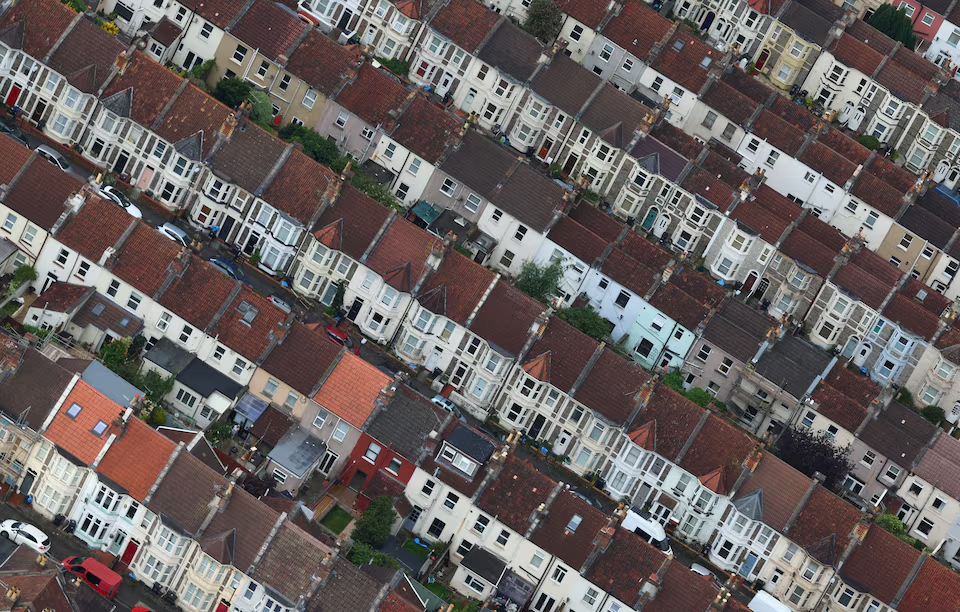As we near the end of 2024, the UK housing market continues to face significant headwinds, with Rightmove reporting a 1.7% drop in average asking prices for newly listed properties in December. This follows a 1.4% decline in November, marking the second consecutive monthly fall in property prices. Despite this, activity in the property market has remained robust for the time of year, driven by a surge of movers aiming to complete sales before the anticipated rise in property purchase taxes, or stamp duty, in April.
End-of-Year Price Drop in Line with Historical Trends
Rightmove’s latest data shows that the drop in asking prices is in line with the typical seasonal slowdown seen at this time of year. However, compared to December 2023, asking prices are still 1.4% higher, suggesting that overall, the market remains relatively stable in the long term. Rightmove’s director of property science, Tim Bannister, noted that while the drop in asking prices is consistent with historical trends for December, the ongoing demand and activity within the market signal underlying resilience despite broader economic pressures.
Increased Activity in the Market
Interestingly, even as prices have fallen, activity in the housing market has been notably strong. The number of agreed sales in December was 22% higher than in the same period last year, indicating that many buyers are still moving forward with their property purchases. New buyer demand also increased by 13%, further demonstrating that the appetite for property remains, despite the challenging economic environment.
The rise in sales activity is likely due to buyers rushing to secure properties before the planned stamp duty changes take effect in April. These changes, announced earlier this year, will make property more expensive for many buyers, particularly those purchasing second homes or homes above the £300,000 threshold.
Stamp Duty and Market Uncertainty
One of the key challenges facing the property market in 2025 is the looming rise in stamp duty rates. Starting in April, first-time buyers in England will pay stamp duty on properties costing over £300,000, down from the previous threshold of £425,000. Additionally, all buyers will face tax on homes priced from £125,000, with a further increase in the tax surcharge for second homes.
These changes have created a level of uncertainty in the market, with some buyers looking to act quickly to avoid the higher taxes. Bannister acknowledged the impact of these upcoming changes, stating that the stamp duty hikes are “a cloud over the market at the moment” and that their effect on activity is difficult to predict. “Some groups will be much more impacted than others, and therefore keen to avoid the additional charges,” he said.
Potential for Mortgage Rate Adjustments
As the market faces these challenges, some analysts believe that the Bank of England’s monetary policy could provide some relief. With interest rates currently at 4.75%, any potential reduction in the Bank Rate could help to calm the market and boost consumer confidence. Mortgage rate cuts would ease financial pressures on buyers, making properties more affordable and potentially stimulating further demand.
While the Bank of England has indicated that rate cuts will be gradual, investors are pricing in a series of quarter-point cuts in the coming year, which could help provide a stabilising effect on the property market. Bannister added that even a modest reduction in rates would “help to settle the market and provide a boost to sentiment.”
The Future of Housebuilding
Another factor to watch in the coming months is the government’s plans to overhaul the planning system. Prime Minister Keir Starmer’s Labour government recently unveiled proposals to speed up housebuilding and stimulate economic growth. If successful, this could increase the supply of new homes, potentially helping to address the ongoing housing shortage in the UK and bringing greater stability to the market over the long term.
A Mixed Outlook for 2025
Looking ahead to 2025, the UK property market faces a delicate balancing act. While asking prices have dropped in recent months, demand remains strong, particularly among buyers keen to complete their purchases before the rise in stamp duty. However, the market will need to navigate the complexities of higher property taxes, interest rates, and ongoing economic uncertainty.
Bannister noted that while the coming months may be challenging, there are signs that the market will stabilise. A reduction in interest rates and a more settled economic environment could provide the support needed for a recovery in the second half of 2025. For now, however, buyers and sellers alike will need to stay nimble as the property market continues to evolve in the face of changing fiscal policies and economic conditions.
The UK housing market in 2025 is likely to be shaped by these various factors, and it remains to be seen how much of an impact the changes in stamp duty and mortgage rates will have on activity and prices over the next 12 months.
